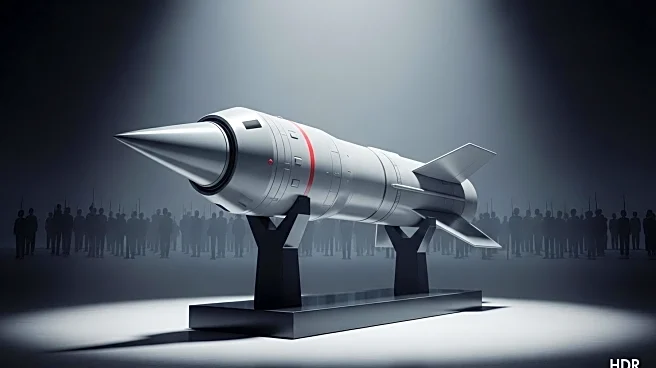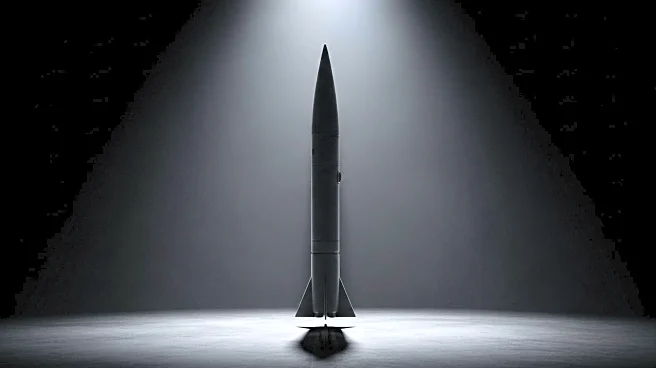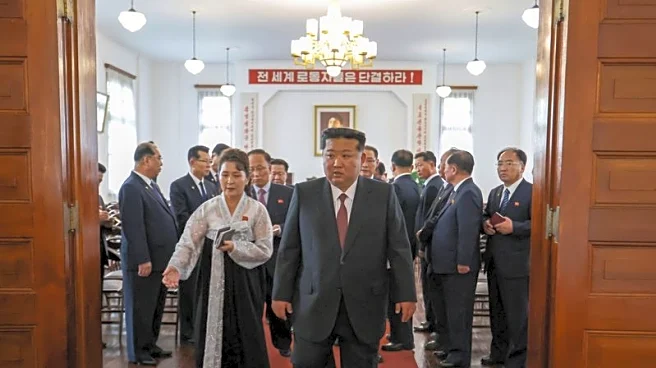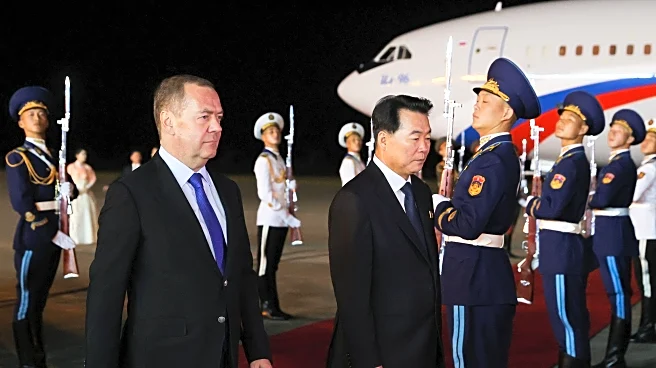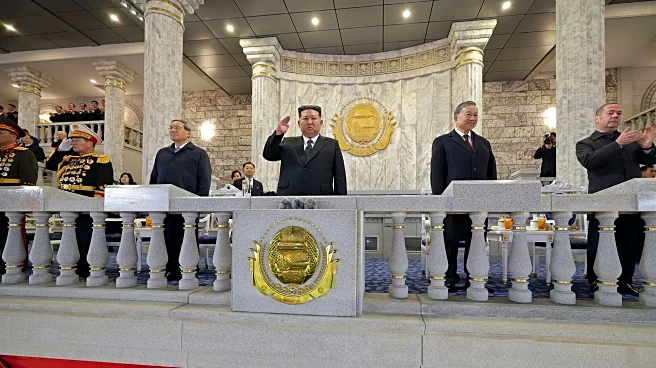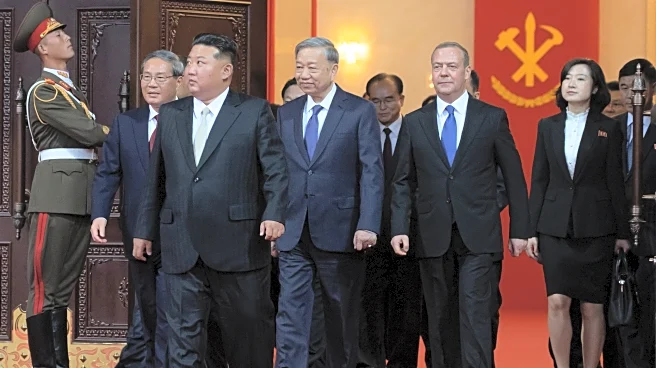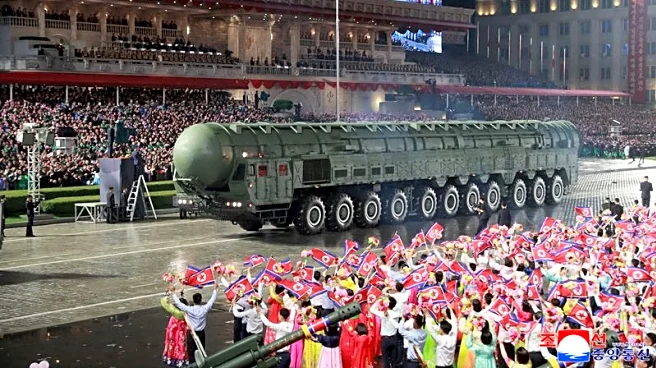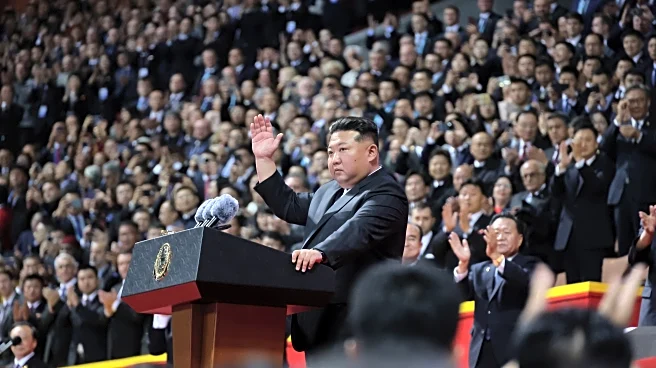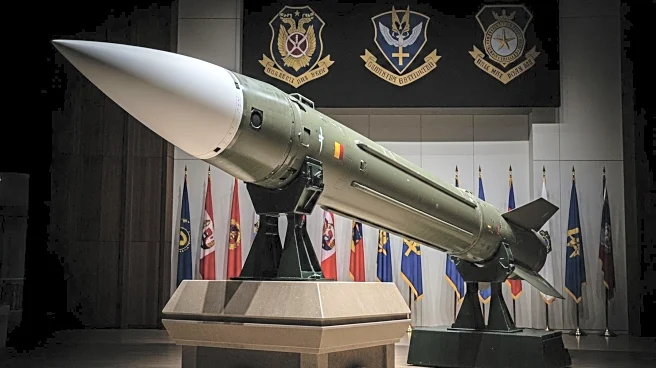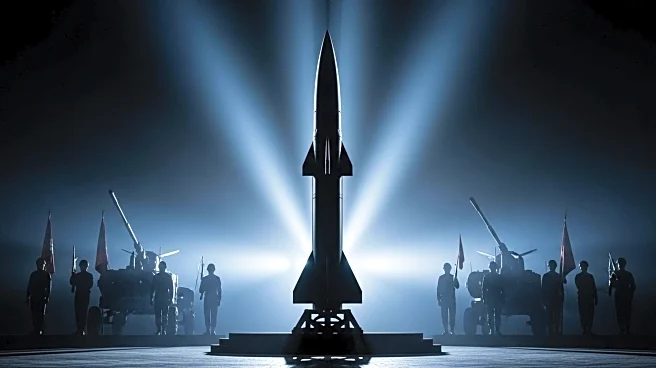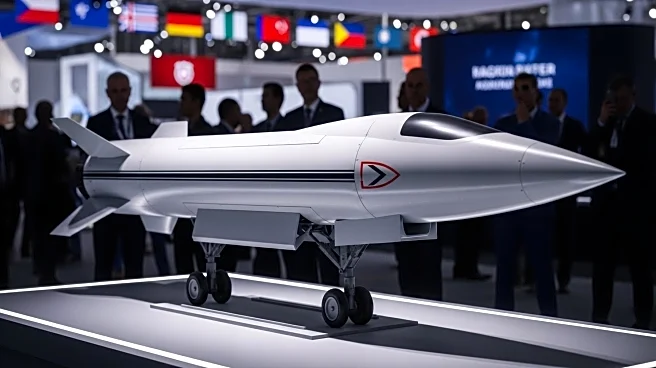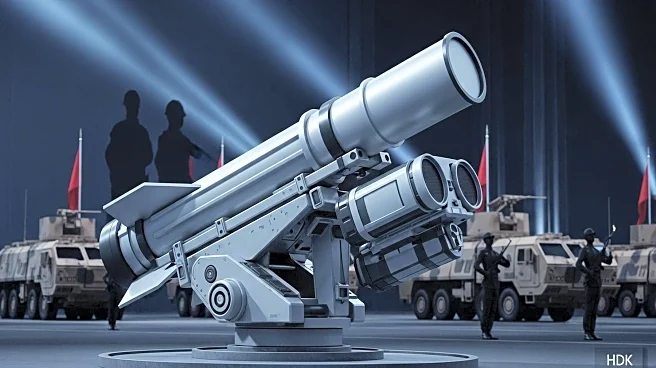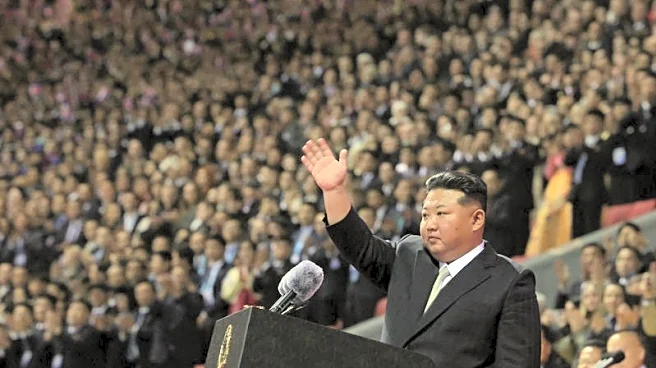What is the story about?
What's Happening?
North Korean leader Kim Jong Un has presided over a military parade showcasing the nation's latest intercontinental ballistic missile, the Hwasong-20. The parade, held in Pyongyang, commemorated the 80th anniversary of the Workers' Party of Korea's founding. The missile is described by state media KCNA as North Korea's 'strongest nuclear strategic weapon system.' Despite its theoretical capability to strike anywhere in the United States, experts question its guidance precision and warhead survivability during atmospheric re-entry. The event was attended by international dignitaries, including Chinese Premier Li Qiang and former Russian President Dmitry Medvedev.
Why It's Important?
The debut of the Hwasong-20 missile represents a significant advancement in North Korea's nuclear capabilities, potentially altering the strategic balance in the region. The missile's ability to carry multiple warheads could strain existing U.S. missile defense systems, increasing the deterrence effect against Washington. This development may lead to heightened diplomatic tensions and necessitate strategic adjustments by the U.S. and its allies. Additionally, Kim Jong Un's remarks about North Korean troops serving abroad, particularly in Russia's Ukraine war, indicate a strengthening of military ties between North Korea and Russia, which could have broader geopolitical implications.
What's Next?
Experts anticipate that North Korea will conduct tests of the Hwasong-20 missile before the end of the year, which could further escalate tensions with the United States and its allies. The international community may respond with increased sanctions or diplomatic efforts to curb North Korea's nuclear ambitions. Kim Jong Un's expressed desire to strengthen cooperation with Russia suggests potential future military and economic exchanges between the two nations, which could impact regional dynamics and U.S. foreign policy strategies.
AI Generated Content
Do you find this article useful?
